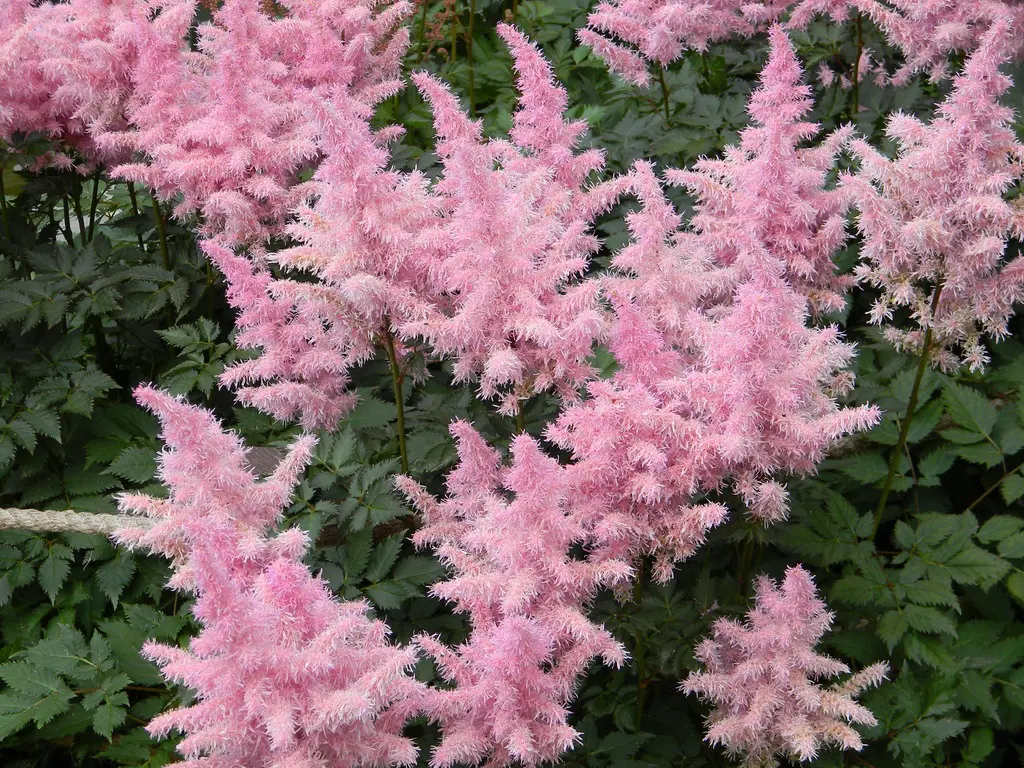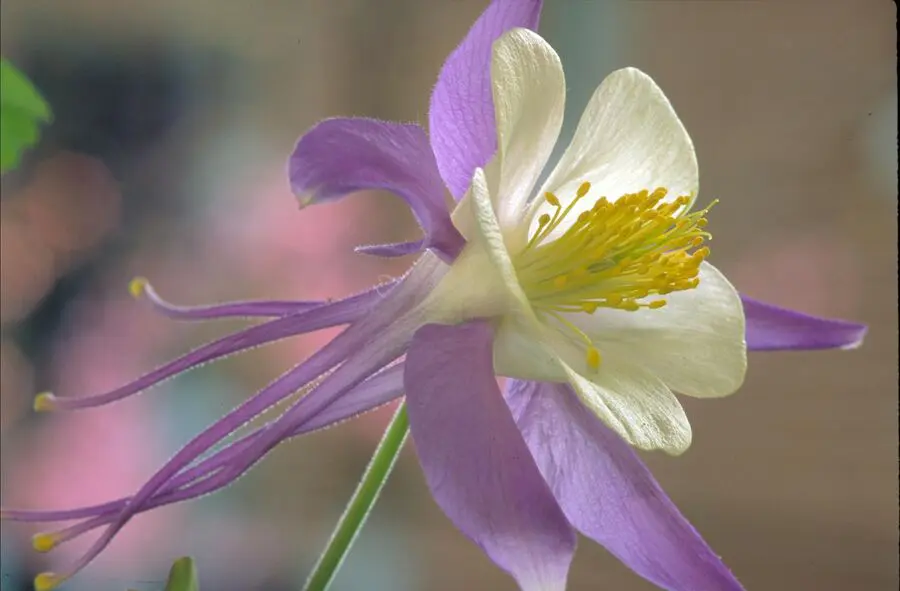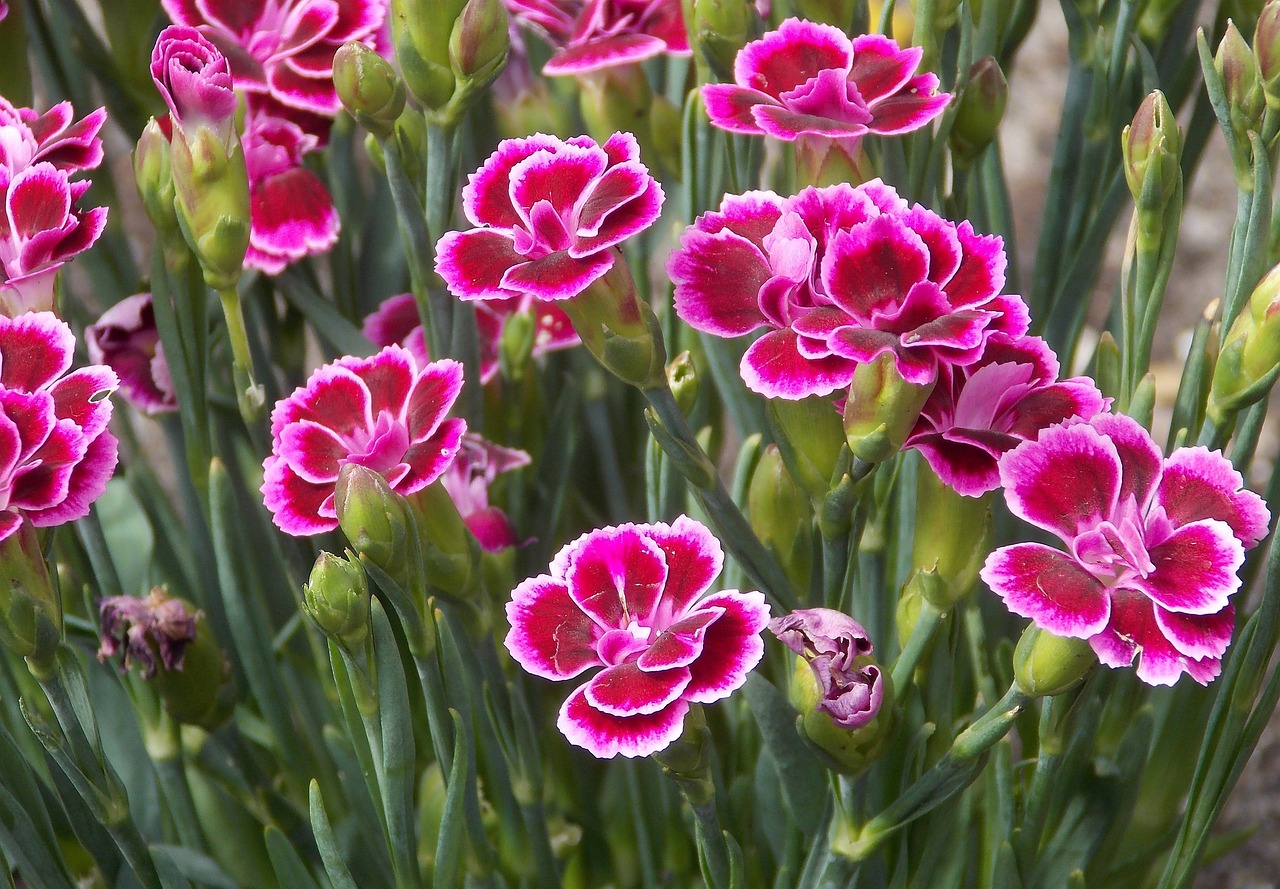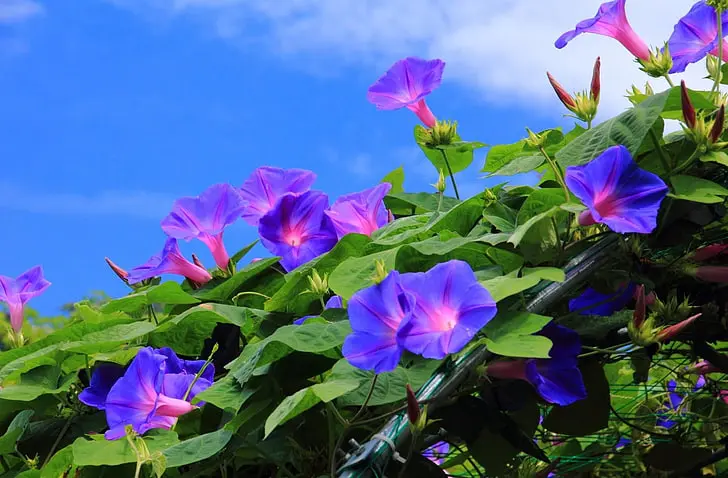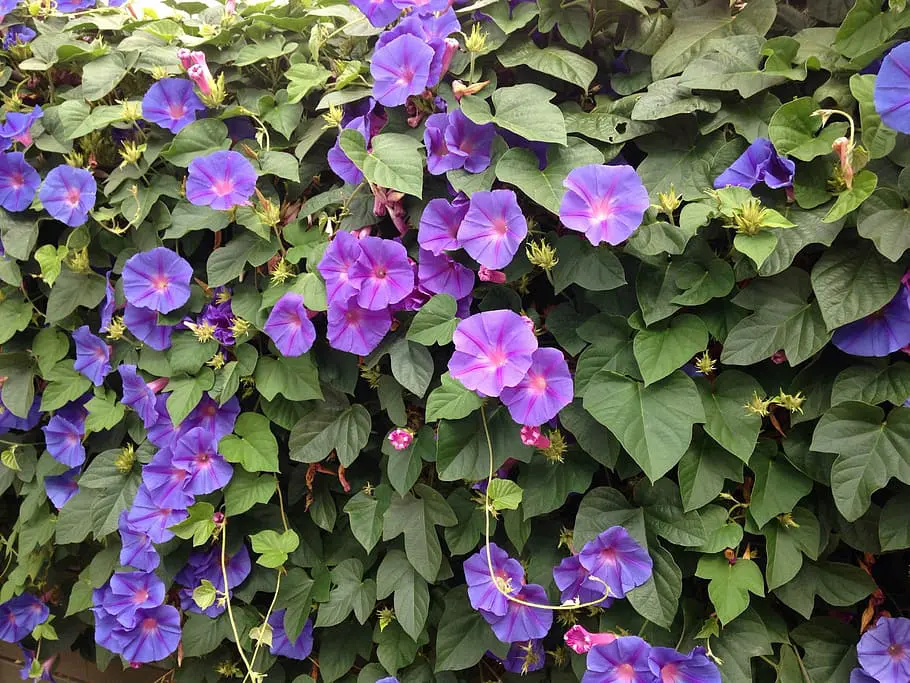This post contains affiliate links. If you buy something from one of our links we may earn a commission. Thanks
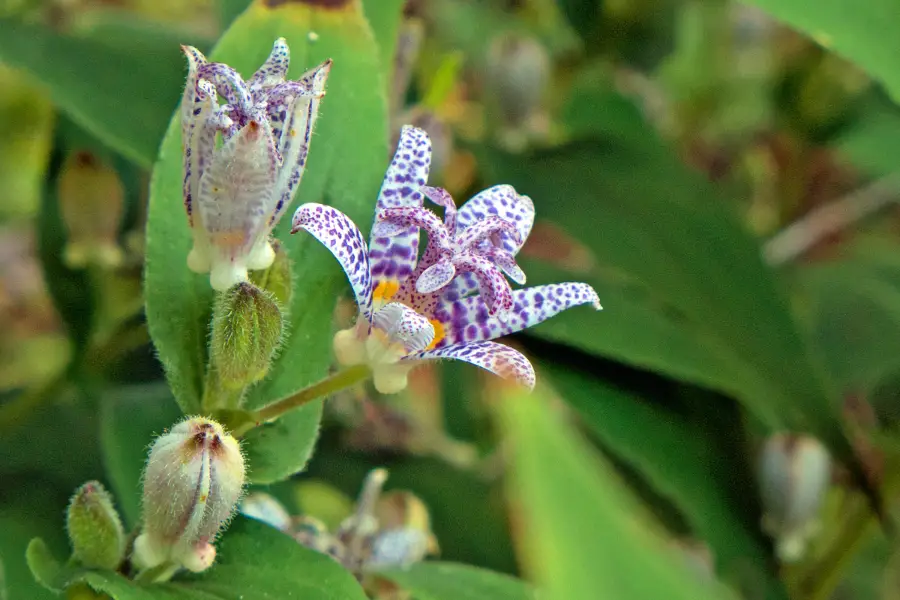
Discover the joy of gardening with our comprehensive guide on how to grow Toad Lily. Dive into the world of these unique, beautiful flowers and transform your garden today!
To grow Toad Lily, choose a shady or partly shady spot with well-drained, humus-rich soil. Plant the rhizomes 2-3 inches deep and 12-18 inches apart. Keep the soil consistently moist, especially during the growing season. Fertilize lightly in the spring and again in midsummer for optimal blooms.
Ever wondered how to grow Toad Lily, the unique and enchanting addition to any garden? Well, you’re in the right place!
This guide will take you on a journey through the fascinating world of Toad Lilies, from their origins to their care.
So, whether you’re a seasoned gardener or just starting out, get ready to roll up your sleeves, and let’s dive into the captivating process of growing Toad Lilies!
How to Grow Toad Lily
Welcome to our comprehensive guide on ‘How to Grow Toad Lily’. In this post, we’ll explore everything you need to know about these enchanting flowers.
From understanding their origin and unique characteristics to the ins and outs of planting and caring for them, we’ve got you covered.
We’ll also delve into common problems you might encounter and how to prepare your Toad Lilies for winter.
Plus, we’ll answer some frequently asked questions. So, whether you’re a gardening enthusiast or a beginner looking to add a touch of charm to your garden, this guide is for you. Let’s get started!
Brief Overview of Toad Lily
Toad Lily, scientifically known as Tricyrtis hirta, is a unique and captivating perennial plant that hails from Asia.
It’s a true gem in the world of gardening, thanks to its distinctive, orchid-like flowers.
These flowers are white to light purple, adorned with vibrant purple spots, giving them an exotic and enchanting appearance.
The plant typically blooms in late summer or early fall, adding a splash of color when many other plants are starting to fade.
The Toad Lily is a shade-loving plant, making it a perfect choice for those tricky, shady spots in your garden.
Tricyrtis is a genus of Asian flowering plants in the lily family, with approximately 20 known species. The species are commonly known in English as toad lilies. The genus has a native range from the Himalayas to eastern Asia, including China,[3] Japan,[4] Philippines and Taiwan,[5] and a few species are cultivated for their ornamental qualities in other parts of the world. From: Wikipedia
Importance and Benefits of Growing Toad Lily
Growing Toad Lily in your garden isn’t just about the aesthetic appeal, although they are undoubtedly a stunning addition.
These plants are also beneficial for local ecosystems. They attract a variety of pollinators, including bees and butterflies, contributing to biodiversity in your garden.
Moreover, Toad Lilies are relatively low maintenance once established, making them a great choice for both novice and experienced gardeners.
They’re also highly versatile and can be grown in containers, borders, or woodland gardens.
But perhaps the most significant benefit of growing Toad Lily is the joy and satisfaction it brings.
There’s something truly rewarding about nurturing these plants and watching them bloom into their full glory.
It’s a testament to the beauty of nature and the fulfilling journey of gardening.
Understanding Toad Lily
Before we dive into the practical steps of growing Toad Lily, let’s take a moment to truly understand this fascinating plant.
After all, the more we know about Toad Lily, its origins, characteristics, and the different varieties available, the better equipped we’ll be to provide the best care possible.
So, let’s embark on this enlightening journey of understanding the Toad Lily, a plant that’s as intriguing as it is beautiful.
Origin and Characteristics of Toad Lily
Toad Lily, or Tricyrtis hirta, is native to Asia, specifically regions of Japan, Taiwan, and the Philippines.
It’s a perennial plant, meaning it lives for more than two years, and it’s part of the Liliaceae family.
One of the most striking characteristics of the Toad Lily is its unique, orchid-like flowers.
These flowers are small, usually about 2 inches in size, and they’re white to light purple with vibrant purple spots.
The flowers bloom on long, arching stems, creating a stunning display in late summer to early fall.
The plant itself can reach up to 3 feet in height and 2 feet in width. The leaves are bright green, pointed, and arranged in a ladder-like fashion along the stems.
The entire plant is covered in fine hairs, which is why it’s sometimes referred to as the hairy Toad Lily.
Different Varieties of Toad Lily
There are several varieties of Toad Lily, each with its own unique characteristics. Here are a few examples you might run across:
‘Golden Gleam’: This variety is a bit shorter and features gray-spotted chartreuse and golden leaves with dark purple and white speckled blooms.
‘Lightning Strike’: This variety has leaves with green streaks and pale lavender blooms.
‘Miyazaki’: Known for its profusion of shorter purple and white speckled flowers. Its cousin ‘Miyazaki Gold’ grows shorter at 12 inches tall.
‘Moonlight’: This variety has chartreuse leaves with unique purple-speckled white flowers and inside rings of purple.
‘Sinonome’: A hybrid with clusters of purple and white speckled blooms.
‘Tojen’: Another hybrid producing white flowers with lavender margins and unspotted inner tepals sitting on burgundy stems.
Each variety of Toad Lily brings its own unique charm to the garden, so you can choose the one that best suits your aesthetic preferences and gardening conditions.
How to Plant Toad Lily
Now that we have a good understanding of Toad Lilies and its varieties, let’s get our hands dirty and delve into the exciting part of planting Toad lilies!
Whether you’re a seasoned gardener or a beginner, planting Toad Lily is a rewarding experience.
From choosing the right location to preparing the soil and the actual planting process, we’ll guide you through each step.
So, grab your gardening gloves, and let’s get started on this journey of bringing the enchanting Toad Lily to life in your garden!
Choosing the Right Location
The first step in planting Toad Lily is choosing the right location. These plants prefer partial to full shade, making them perfect for those areas in your garden that doesn’t get a lot of direct sunlight.
They’re often found growing naturally on the edges of shady forests, so try to replicate these conditions in your garden.
If you live in an area with intense sun and hot summers, a location with full shade is ideal.
For milder climates, partial shade or a spot that gets morning sun and afternoon shade would be perfect.
Preparing the Soil
Next, let’s talk about soil preparation. Toad Lilies thrive in fertile, moist, and organically rich soil.
They prefer loamy, well-draining soil with consistent moisture and a slightly acidic pH level.
Before planting, it’s a good idea to enrich your soil with a generous amount of compost or other organic material.
This not only provides the nutrients your Toad Lilies need to grow but also helps the soil retain the right amount of moisture.
If you are growing Toad Lilies in pots a mix of 75% coco coir and 25% perlite will work really well. It offers good moisture retention while also being well draining.
Caring for Toad Lily
Once you’ve planted your Toad Lily, the next step is to ensure it gets the care it needs to thrive.
Caring for Toad Lily involves more than just watering; it’s about creating an environment where the plant can flourish.
From providing the right amount of light to understanding its watering, and fertilizer needs, and the importance of pruning and maintenance, we’ll guide you through each aspect of Toad Lily care.
So, let’s dive in and learn how to keep your Toad Lily healthy and vibrant!
Lighting
Toad Lilies are shade-loving plants, which means they prefer locations with partial to full shade.
They’re often found growing naturally on the edges of shady forests. If you live in an area with intense sun and hot summers, a location with full shade is ideal.
For milder climates, a spot that gets morning sun and afternoon shade would be perfect.
Remember, too much direct sunlight can cause the leaves to scorch, so make sure your Toad Lilies have enough shade to protect them.
Watering Requirements
When it comes to watering, Toad Lilies like consistent moisture. This means you should water them regularly to keep the soil evenly moist, but not soggy.
The frequency of watering will depend on your location and rainfall, but in general, you may need to water your Toad Lilies multiple times a week, especially during dry periods.
If you notice the leaves starting to wilt or turn brown at the edges, it might be a sign that your plant needs more water.
Fertilizer Needs
Toad Lilies thrive in nutrient-rich soil. To ensure they get the nutrients they need, it’s a good idea to feed them with a well-balanced liquid fertilizer at half-strength each spring.
Alternatively, you can add a generous amount of compost to the soil. This not only provides the nutrients your plants need but also helps the soil retain the right amount of moisture.
Pruning and Maintenance
Pruning is an important part of Toad Lily care. In general, these plants don’t require a lot of pruning, but you can remove dead or damaged stems and leaves to keep the plant looking its best.
Pruning can also help improve air circulation and reduce the risk of disease.
In terms of general maintenance, keep an eye out for any signs of pests or diseases, and take action as soon as you notice anything unusual.
With regular care and attention, your Toad Lilies can remain healthy and vibrant, providing a stunning display in your garden year after year.
Common Problems and Solutions
Like all plants, Toad Lilies can sometimes encounter a few bumps along the road.
But don’t worry, most of these issues can be easily addressed once you know what to look for.
In this section, we’ll discuss some of the common problems that can affect Toad Lily, from diseases and pests to other potential challenges. More importantly, we’ll provide you with effective solutions to keep your Toad Lilies healthy and thriving.
So, let’s tackle these issues head-on and ensure your Toad Lilies continue to be a beautiful addition to your garden!
Diseases and Pests that Affect Toad Lily
While Toad Lilies are generally hardy and resistant to many common garden pests, they can sometimes be affected by slugs and certain diseases.
Slugs are attracted to the moist, shady conditions that Toad Lilies love, and they can cause damage by eating the foliage of these plants.
In terms of diseases, Toad Lilies can sometimes be affected by a fungal disease known as anthracnose. This disease can cause the leaves to develop small orange spots.
How to Prevent and Treat These Problems
Preventing and treating slug damage involves a few different strategies.
One of the most effective ways to deter slugs is to create a barrier around your plants using materials that slugs don’t like to cross, such as crushed eggshells or diatomaceous earth.
You can also use slug bait or traps to help control the slug population.
As for anthracnose, prevention measures include watering only the base of the plant, not the leaves, and keeping the area around your plants free from garden debris to improve air circulation.
If you notice signs of anthracnose, you can treat the disease by removing and disposing of the affected leaves and applying a fungicide.
Remember, the key to dealing with pests and diseases is early detection.
Regularly check your Toad Lilies for signs of trouble, and take action as soon as you notice anything unusual.
With the right care and attention, your Toad Lilies can remain healthy and beautiful, providing a stunning display in your garden year after year.
Preparing Toad Lilies for Winter
As the seasons change and winter approaches, it’s important to prepare your Toad Lilies for the colder months. Toad lilies are hardy in USDA zones 4-9.
While these plants are hardy and can withstand a variety of conditions, they do need some extra care to ensure they survive the winter and come back strong in the spring.
In this section, we’ll guide you through the steps to protect your Toad Lily during winter.
So, let’s get started and make sure your Toad Lilies are well-prepared for the chill!
Steps to Protect Toad Lily During Winter
Toad Lilies are hardy plants that can withstand cold temperatures, but they do appreciate a little extra care during the winter months.
Here are some steps you can take to protect your Toad Lilies when the weather gets cold:
Mulching: One of the best ways to protect your Toad Lilies during winter is to apply a layer of mulch around the base of the plants.
Mulch acts as an insulator, helping to protect the roots from freezing temperatures.
It also helps to retain moisture in the soil, which can be beneficial in areas where winter weather is dry.
You can use organic mulch like straw, leaves, or wood chips.
Cutting Back: After the first hard frost, you can cut back the foliage of your Toad Lilies to about 2-3 inches above the ground. This helps to prevent disease and pest problems over the winter.
Winter Watering: While Toad Lilies are dormant during the winter, they still need some moisture.
If your area experiences a dry winter, you may need to water your plants occasionally to prevent the soil from completely drying out.
Protection from Wind: If your Toad Lilies are in a location that’s exposed to harsh winter winds, you might consider providing some sort of windbreak to protect them.
This could be a temporary structure or even a burlap wrap around the plants.
By taking these steps, you can help ensure that your Toad Lilies survive the winter and are ready to grow and bloom again when spring arrives.
Can Toad Lilies Be Grown in Pots?
Absolutely, Toad Lilies can be successfully grown in pots.
This can be a great option if you’re short on garden space or if you want to add some greenery to a patio or balcony.
When growing Toad Lilies in containers, there are a few key things to keep in mind.
First, choose a pot with good drainage holes to prevent waterlogging, which can lead to root rot.
The pot should be deep enough to accommodate the plant’s roots and allow for growth.
The soil used should be rich, well-draining, and slightly acidic. You can use a high-quality potting mix and add some compost or well-rotted manure for extra nutrients.
Remember, potted Toad Lilies will need to be watered more frequently than those planted in the ground, as they don’t have access to underground water sources.
Keep the soil consistently moist, but avoid overwatering.
Finally, even though Toad Lilies are shade-loving plants, those grown in pots can tolerate a bit more sunlight.
So, a spot with morning sun and afternoon shade would be ideal.
With the right care, your potted Toad Lily can thrive and provide a beautiful display of unique, orchid-like flowers.
How To Propagate Toad Lilies
Toad Lilies can be propagated through two main methods: division and cuttings. Here’s how you can do it:
Division: This is best done in early spring. Start by digging a circle around the plant, slowly loosening the root system.
Once the plant can be lifted from the ground, use a shovel and snips to divide the root system into multiple sections.
Make sure each section has healthy roots and foliage if present. Plant each section in its own spot, amending the soil with plenty of compost before planting.
Cuttings: This can be done in early summer before flower buds appear.
Snip a cutting that is around 4 to 6 inches long, ensuring the cutting has healthy leaves on it.
Dip the cut end into rooting hormone, then gently bury the cut end into the moistened, rich soil.
Place the cutting in an area that receives bright, indirect light and keep the soil moist. In a few weeks, you should see root growth.
Remember, propagation requires patience and care. But with time, you’ll be rewarded with new Toad Lily plants that you’ve grown yourself!
Growing Toad Lilies From Seeds
Toad Lilies can also be propagated from seeds. Here’s how you can do it:
Outdoor Sowing: In the early spring or late fall, scatter fresh seeds in the garden. The cold experienced through winter or early spring will naturally stratify the seeds.
Keep the soil moist and watch for little seedlings. They should appear in the late spring as temperatures warm up.
Indoor Sowing: If you prefer to start your seeds indoors, place fresh seeds in the refrigerator in a plastic bag for about one month.
This will simulate winter, as the seeds require cold stratification before germinating.
After one month, lightly sow them on top of moist, rich soil. Place the seeds in an area with bright, indirect lighting and keep the soil moist. Germination should occur in 4 to 6 weeks.
Remember, Toad Lily seeds need light to germinate, so don’t bury them.
Also, the seeds must be used fresh, not dried and stored. With patience and the right care, you’ll soon have new Toad Lily plants growing from seeds.
Sowing from seed is much slower than other propagation methods but if you are patient it’s a great way to watch Toad Lilies start and grow or to produce a large number of plants.
FAQs
Growing Toad Lilies can bring up a lot of questions, especially if you’re new to these unique plants. But don’t worry, we’re here to help!
In this section, we’ll address some of the most frequently asked questions about Toad Lilies.
From their growth habits to their care requirements and more, we’ve got the answers you’re looking for.
So, let’s dive into these FAQs and clear up any uncertainties you might have about growing and caring for Toad Lilies!
Q: How do you grow toad lilies?
A: Growing Toad Lilies involves several steps. First, choose a location in your garden that offers partial to full shade.
Prepare the soil by enriching it with compost or organic material. Plant your Toad Lilies, either from divisions, potted plants, or seeds, and water them thoroughly.
Regular care includes providing consistent moisture, feeding with a well-balanced fertilizer each spring, and occasional pruning.
Q: Are toad lilies hard to grow?
A: Toad Lilies are generally not hard to grow, especially once they’re established.
They’re quite hardy and can tolerate a range of conditions. However, they do have specific requirements, such as shade and consistent moisture, that need to be met.
With the right care and attention, Toad Lilies can thrive in your garden.
Q: How do you prepare toad lilies for winter?
A: Preparing Toad Lilies for winter involves applying a layer of mulch around the base of the plants to protect the roots from freezing temperatures, cutting back the foliage after the first hard frost, and providing occasional water if the winter is dry.
If your Toad Lilies are exposed to harsh winter winds, consider providing a windbreak for protection.
Q: Do toad lilies come back every year?
A: Yes, Toad Lilies are perennial plants, which means they come back year after year.
After they die back in the winter, they’ll start to grow again in the spring, providing a beautiful display of flowers in late summer to early fall.
Conclusion
As we wrap up our comprehensive guide on how to grow Toad Lily, we hope you’re feeling confident and excited about bringing these unique plants into your garden.
From understanding their origins and characteristics to planting, caring, and troubleshooting, we’ve covered a lot of ground.
But remember, gardening is a journey, not a destination.
So, as we conclude, let’s take a moment to reflect on what we’ve learned and look forward to the joy of watching our Toad Lilies grow and bloom in the seasons to come!
Recap of the Main Points
We’ve journeyed through the world of Toad Lilies, starting with an understanding of their origin and unique characteristics.
We’ve learned about the different varieties of this beautiful plant and how to choose the right location and prepare the soil for planting.
We’ve delved into the specifics of caring for Toad Lilies, including their lighting, watering, and fertilizer needs, as well as the importance of pruning and maintenance.
We’ve also addressed common problems and their solutions and discussed how to prepare these plants for winter.
Finally, we’ve answered some frequently asked questions and explored the methods of propagating Toad Lilies.
Encouragement to Start Growing Your Own Toad Lilies
Now that you’re equipped with all this knowledge, it’s your turn to bring the magic of Toad Lilies into your own garden.
Remember, gardening is a rewarding journey filled with learning and growth, not just for the plants, but for you as well.
So, don’t hesitate. Embrace the adventure, and start growing your own Toad Lilies.
We’re confident that with the information from this guide, you’ll be able to cultivate a thriving Toad Lily plant that will bring you joy for years to come. Happy gardening!
Read more: Backyard Gardening Ideas: Easy Garden Ideas For Beginners












